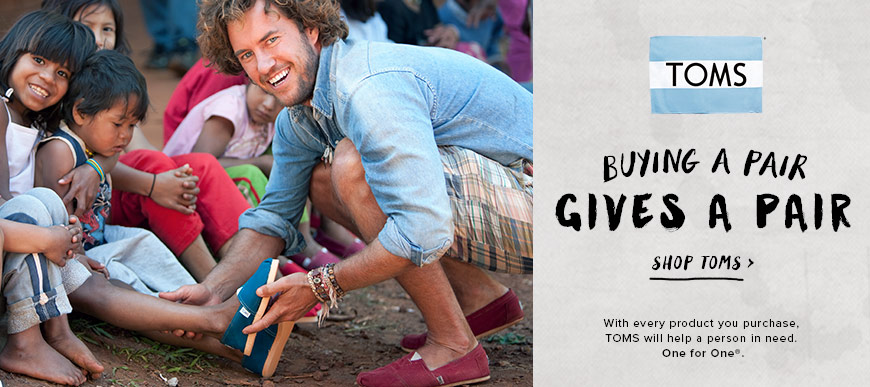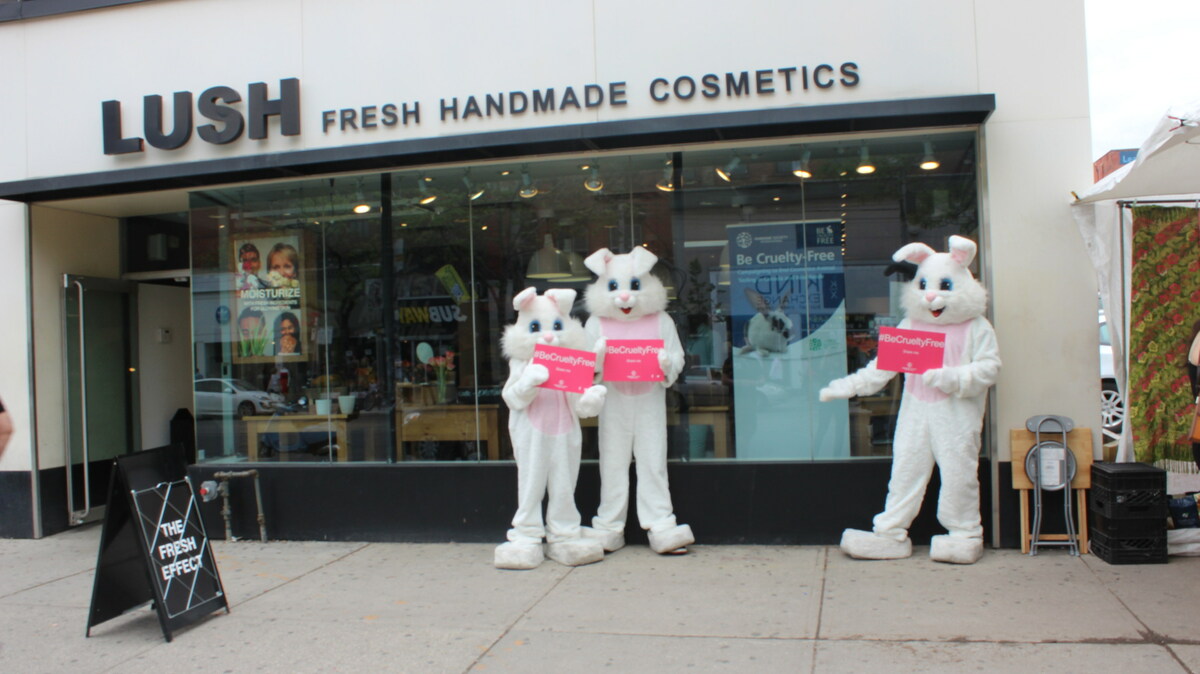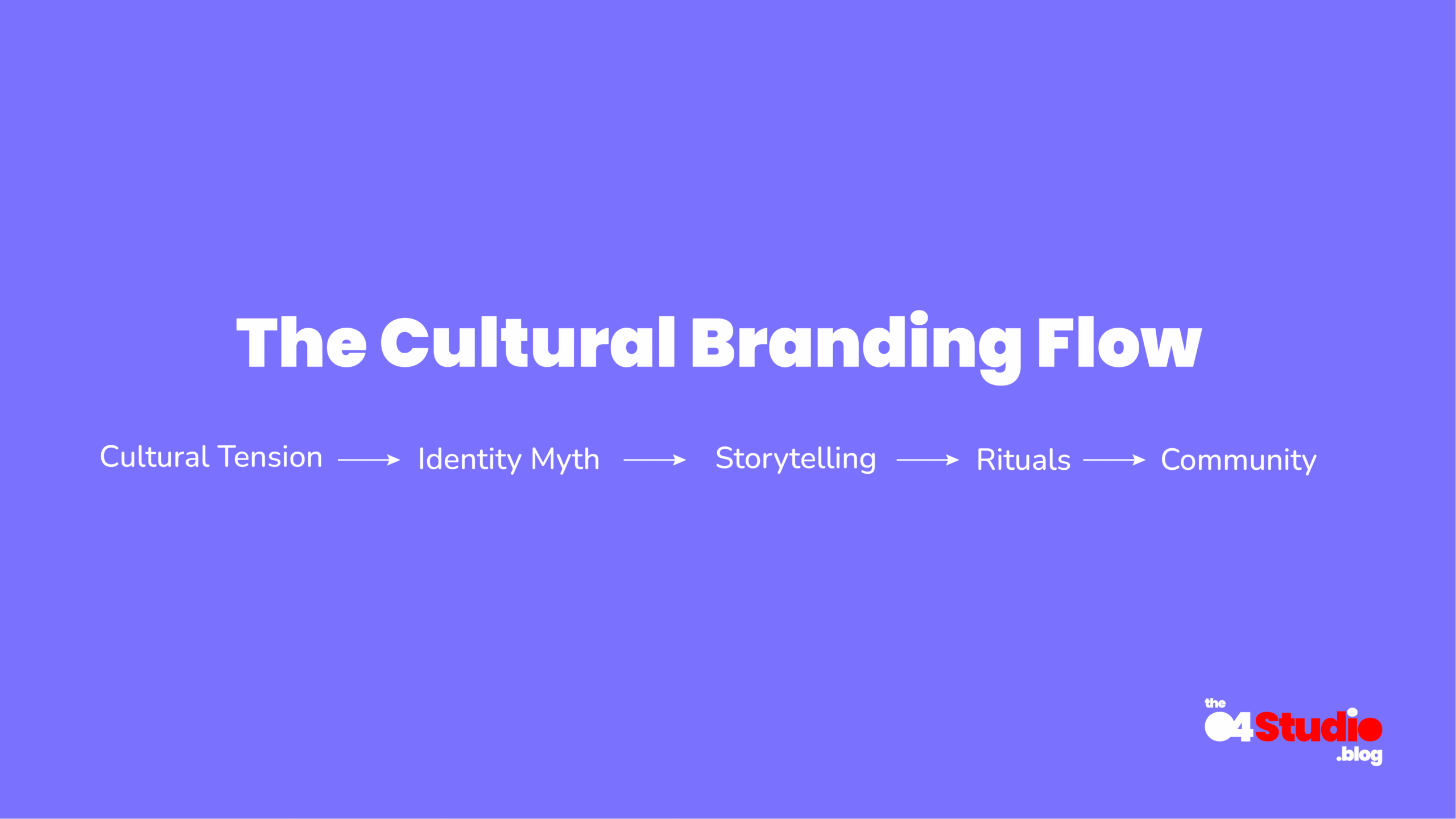Cultural Branding: How Top Brands Build Deep Connections & Loyalty
Have you ever felt an undeniable pull towards a brand, something beyond just liking their products? It’s more than good marketing; it’s a feeling of belonging, a shared worldview, a sense that this brand “gets” you. This isn’t accidental. It’s the magic of cultural branding.
In today’s bustling marketplace, where consumers are bombarded with choices, simply selling a product or service isn’t enough. Brands need to stand for something, to tap into deeper societal values and aspirations. This is where cultural branding steps in, transforming a mere company into a cultural icon that resonates deeply with its audience.
So, what exactly is this fascinating approach, and how can you harness its power? Let’s dive in!
What is Cultural Branding? (And Why You Should Know Doug Holt)
At its heart, cultural branding is about a brand becoming a symbol. It’s not just about what a product does, but what it means to people. Think of it as a strategic process where a brand doesn’t just market to a culture, but rather becomes an integral part of that culture, reflecting and even shaping its values, beliefs, and narratives.
A true pioneer in this field is Douglas Holt, a renowned marketing professor and author of “How Brands Become Icons: The Principles of Cultural Branding.” Holt argues that traditional branding often falls short because it focuses on superficial aspects like benefits or personality. Cultural branding, on the other hand, understands that the most powerful brands become iconic by addressing deep-seated societal tensions and anxieties, offering compelling “identity myths” that people can rally around.
In essence, cultural branding is about identifying a cultural need or aspiration that isn’t being fully met, and then positioning your brand as the answer. It’s about forging an emotional connection that transcends features and benefits, moving into the realm of shared meaning and collective identity. This is the power of cultural branding.
The Cultural Branding Framework: Your Roadmap to Resonance
Cultural branding isn’t a nebulous concept; it’s a structured approach with several key components that work in harmony. Let’s break down the framework, often implicitly or explicitly explored in Holt’s work and by other cultural branding strategists:
1. Identity Myth
Every powerful cultural brand tells a story, a narrative that offers a compelling vision of who its audience can be or what they can achieve. This isn’t just any story; it’s an “identity myth.”
Imagine a cultural tension – a widespread anxiety, a desire, or a contradiction within society. The identity myth emerges as a heroic tale that resolves this tension, offering a solution or an ideal.
It’s a symbolic narrative that resonates deeply with people’s aspirations and challenges, portraying a way of life that the brand embodies. This forms the core of effective cultural branding.
Relatable Example: Think of the classic superhero narrative. People often feel powerless or unheard in their daily lives (cultural tension). The superhero myth offers a powerful individual who can overcome adversity and stand for justice, giving people a vicarious sense of empowerment and hope. Brands create similar “superhero” narratives for their consumers. Learn more about brand archetypes and how they relate to identity myths.
2. Cultural Tension
This is the starting point, the raw material for cultural branding. Cultural tensions are the unresolved contradictions, anxieties, or desires that exist within a society or a specific demographic. They are the unspoken struggles, the societal paradoxes, or the widespread frustrations that people experience.
Successfully identifying and understanding these tensions is crucial. It requires a keen eye for societal shifts, an ability to read between the lines of consumer behavior, and a genuine curiosity about what truly moves people. Explore methods for cultural research through focus groups and consumer insights.
Relatable Example: In a world increasingly saturated with artificiality and airbrushed perfection (cultural tension), there’s a growing desire for authenticity and realness. Brands that tap into this tension by celebrating genuine beauty or unvarnished experiences are likely to resonate. Consider how societal values impact brand loyalty.
3. Storytelling
Once you’ve identified the identity myth and the cultural tension it addresses, storytelling becomes your most potent tool. This isn’t just about crafting a good ad campaign; it’s about consistently weaving your brand’s narrative into every touchpoint, from your marketing messages to your customer service, your product design, and your company culture.
The story should dramatize the identity myth, making it tangible and relatable. It should evoke emotions, inspire action, and invite people to become part of something bigger than themselves. Effective brand storytelling is a cornerstone of cultural branding. Discover more about the elements of great storytelling in marketing.
Relatable Example: Think of bedtime stories we tell children. These aren’t just random tales; they often carry moral lessons or reinforce certain values. Similarly, a cultural brand’s story reinforces its core message and invites its audience to participate in that meaning.
4. Rituals
Rituals are the consistent, often symbolic, actions that reinforce the brand’s meaning and strengthen the community around it. These can be anything from how people interact with your product to events you host, or even the language and inside jokes that emerge within your brand’s sphere.
Rituals create a sense of shared experience and belonging, transforming individual consumption into a collective practice that reinforces the identity myth. Explore the power of brand rituals in consumer behavior.
Relatable Example: For many, the morning coffee routine is a ritual. It’s not just about the caffeine; it’s about the warmth, the quiet moment, the specific mug, or even the café atmosphere. This daily ritual adds meaning to the act of drinking coffee. Consider how brands leverage daily routines for brand engagement.
5. Community
Cultural branding naturally fosters a strong sense of community. When people connect with a brand’s identity myth and participate in its rituals, they often feel a bond with others who share those same values and aspirations.
This community isn’t just about buying a product; it’s about identifying with a shared ideal and finding like-minded individuals.
This community then becomes a powerful advocate for the brand, spreading its message and reinforcing its cultural significance. Building a strong brand community in the digital age is essential for cultural branding.
Relatable Example: Think of fan clubs for a beloved band or sports team. These aren’t just groups of people who enjoy the same thing; they form a community built on shared passion, rituals (like attending concerts or games), and a collective identity. Effective community management strategies can amplify cultural branding efforts.
Why It Matters: Emotional Bonds, Differentiation, and Community Building
So, why go to all this effort? The benefits of successful cultural branding are profound and long-lasting:
- Emotional Bonds: Cultural brands tap into a deeper level of human experience. They don’t just solve a problem; they fulfill a desire, address an anxiety, or embody an aspiration. This creates powerful emotional connections that go far beyond rational preference, fostering intense loyalty and advocacy. When a brand becomes part of a person’s identity, it’s incredibly sticky.
- Differentiation in a Crowded Market: In an increasingly competitive landscape, traditional differentiation based on features or price is fleeting. Cultural branding offers a unique and enduring competitive advantage. When your brand stands for something meaningful, it becomes truly distinct and difficult for competitors to replicate.
- Stronger Community Building: Cultural branding naturally cultivates a passionate community around your brand. This isn’t just a customer base; it’s a tribe of loyal advocates who share your brand’s values and actively champion its message. This community provides invaluable word-of-mouth marketing, authentic feedback, and a sense of shared purpose.
Real-World Examples: Icons in Action
Let’s look at some brands that have mastered the art of cultural branding:
Nike: Just Do It.

Nike’s cultural branding isn’t about shoes; it’s about aspiration, achievement, and overcoming challenges. The cultural tension they address is the struggle against self-doubt, inertia, and the physical limits we perceive. Their identity myth is that of the inner athlete, the hero who pushes boundaries and achieves greatness.
Their iconic “Just Do It” slogan isn’t just a call to action; it’s a profound encapsulation of this myth. Through powerful storytelling featuring athletes who embody perseverance and triumph (often overcoming personal or societal obstacles), Nike invites everyone to tap into their own athletic potential. Running marathons, hitting the gym, or simply walking a few extra steps – these become personal rituals of self-improvement tied to the Nike narrative. The vast community of athletes, fitness enthusiasts, and everyday people who embrace this mindset solidifies Nike’s position as a cultural icon. As of mid-2025, their campaigns continue to feature inspiring stories of resilience and achievement, resonating with a global audience seeking motivation. Read more about Nike’s purpose-driven marketing.
TOMS: One for One.

TOMS emerged at a time when consumers were increasingly aware of global inequalities and the desire to make a positive impact, yet felt overwhelmed by the scale of the problems (cultural tension). Their powerful identity myth is that of the “compassionate consumer” – someone who can make a difference with every purchase, integrating philanthropy into their daily life.
Their storytelling is simple yet potent: for every pair of shoes purchased, a pair is given to a child in need. This direct, transparent narrative highlights the impact of each transaction. The ritual of buying TOMS shoes becomes an act of giving, a tangible way to participate in a global movement of kindness. Wearing TOMS isn’t just about fashion; it’s a visible symbol of one’s values. This has fostered a strong community of socially conscious individuals who proudly wear and advocate for the brand, sharing their stories of giving and inspiring others to join the “One for One” movement. As of 2025, TOMS continues to evolve its giving model to address broader community needs beyond shoes, maintaining its core identity. This is a core aspect of their successful cultural branding approach. Learn more about TOMS’ social impact initiatives.
Lush Cosmetics: Fighting Against Animal Testing & Fresh, Handmade Beauty

In a beauty industry often perceived as artificial, chemical-laden, and complicit in animal cruelty, Lush steps in to address the cultural tension of ethical consumption and the desire for genuine, natural products. Their identity myth is the “conscious beauty advocate” – someone who champions ethical practices, environmental sustainability, and celebrates natural beauty without compromise.
Lush’s storytelling is incredibly transparent and activist-driven. Their shops often feature handmade products with clear “naked” packaging (no plastic) and direct appeals against animal testing, palm oil, and over-packaging. The display of fresh ingredients, often resembling a farmer’s market, reinforces their commitment to natural formulations. The rituals of using Lush products involve a sensory experience – the vibrant colors, the strong natural scents, and the hands-on application of bath bombs or fresh face masks. For many, the act of choosing Lush is a deliberate statement against conventional beauty norms. This fosters a highly engaged community of ethical consumers who actively participate in Lush’s campaigns, share their product experiences, and advocate for cruelty-free, sustainable beauty practices, making it a powerful voice in the cosmetics industry in 2025. This is a prime example of effective cultural branding in action. Discover Lush’s commitment to ethical buying and campaigning.
Red Bull: Giving You Wings

In a world driven by constant demand for performance and peak energy, many individuals experience a feeling of exhaustion and the need for an extra edge (cultural tension). Red Bull addresses this by creating the identity myth of the “unleashed achiever” – someone who pushes limits, defies gravity, and conquers challenges, whether in extreme sports or daily life.
Red Bull’s storytelling rarely focuses on the drink itself, but on the incredible feats of athleticism and daring adventures it enables. From sponsoring world-record-breaking skydives to extreme sports events and music festivals, their narrative is always about pushing boundaries and experiencing exhilarating moments. The ritual of drinking a Red Bull isn’t just about consuming a beverage; it’s often a precursor to an activity, a boost before a challenge, or a moment of shared intensity at an event. This has built a massive community around action sports, adventure, and the pursuit of extraordinary experiences, where Red Bull is the ubiquitous symbol of energy and ambition. Even in 2025, Red Bull remains synonymous with extreme performance and youth culture, constantly finding new ways to tell stories of human triumph. This approach is key to their successful cultural branding.
How to Build a Cultural Brand: Your Step-by-Step Guide
Building a cultural brand isn’t an overnight process, but a continuous journey of understanding, empathy, and authentic engagement. Here’s a simplified step-by-step guide to mastering cultural branding:
Step 1: Unearth the Cultural Tension.
Start with deep research. What are the unspoken anxieties, desires, or contradictions in your target audience’s lives? What frustrates them, inspires them, or keeps them awake at night? Look beyond demographics to psychographics and cultural trends. This requires ethnographic research, observing real-life behaviors, and conducting insightful interviews. For deeper insights, consider reading about what ethnographic research entails.
Example: A new brand of energy drink might observe a cultural tension where people feel constantly drained by their demanding lives but also guilty about consuming unhealthy stimulants.
Step 2: Craft Your Identity Myth.
Based on the identified tension, what heroic narrative can your brand offer? What is the aspirational ideal that resolves this tension? Your identity myth should be a compelling vision of a better self or a better world that your brand embodies. Understanding brand mythology is crucial for cultural branding.
Example: For the energy drink, the identity myth might be “the sustainable achiever” – someone who can power through their day with natural, sustained energy without compromising their health or values.
Step 3: Develop Your Core Storytelling Elements.
How will you dramatize your identity myth? This involves defining your brand’s voice, visual style, and key messages. What kind of language will you use? What imagery will evoke the right emotions? How will your product or service play a role in this story? Explore tips for effective brand storytelling.
Example: The energy drink brand might use earthy tones, imagery of people thriving in nature or creative pursuits, and a narrative that emphasizes natural ingredients and holistic well-being.
Step 4: Design Engaging Rituals.
How can you encourage your audience to consistently interact with your brand in ways that reinforce the identity myth? Think about product usage, customer experiences, events, or even small, symbolic gestures. Creating memorable brand rituals strengthens consumer connection.
Example: The energy drink could encourage a “morning ritual” of mindful consumption, perhaps with a specific opening mechanism or a suggestion to pair it with a healthy breakfast. They might also sponsor community wellness events.
Step 5: Foster Community (and Listen to It!).
Create platforms and opportunities for your audience to connect with each other and with your brand. This could be through social media groups, forums, events, or user-generated content campaigns. Critically, listen to your community. Their feedback, stories, and shared experiences will enrich and evolve your cultural branding efforts. Learn about the benefits of building brand communities.
Example: The energy drink brand might create an online forum for sharing healthy lifestyle tips, host “active living” challenges, and feature user stories about how their product helps them achieve their goals. Effective user-generated content strategies can be powerful.
Step 6: Maintain Authenticity and Adaptability.
Cultural branding is about being genuine. Your brand’s actions must consistently align with its stated values and identity myth. Cultures are dynamic, so stay curious and be prepared to adapt your messaging and strategies as societal tensions and aspirations evolve. Authenticity is key for long-term brand success.
Visualizing the Journey: The Cultural Branding Flow
Here’s a simple diagram to help you visualize the flow of cultural branding:

Tension → Myth → Story → Ritual → Community



